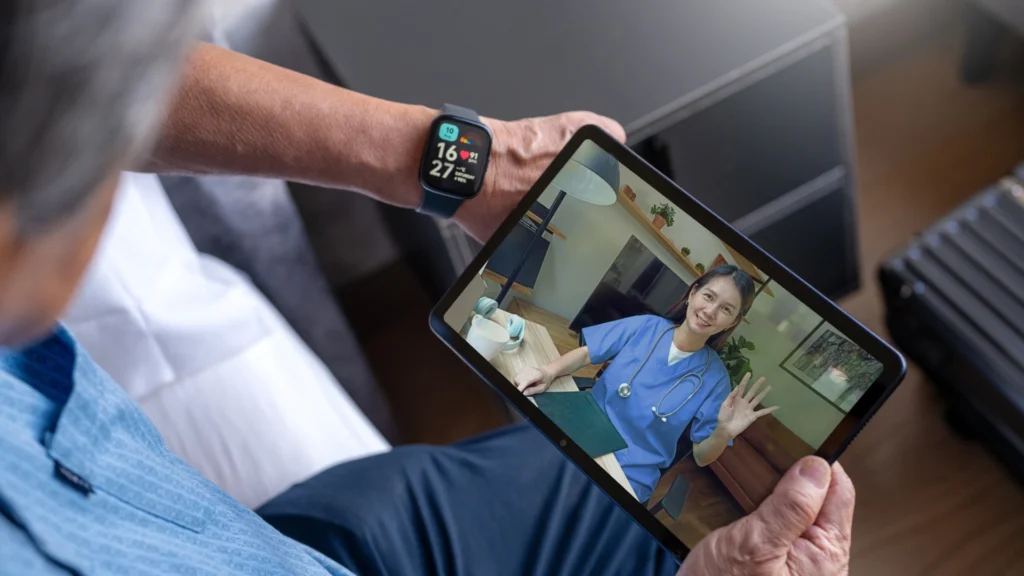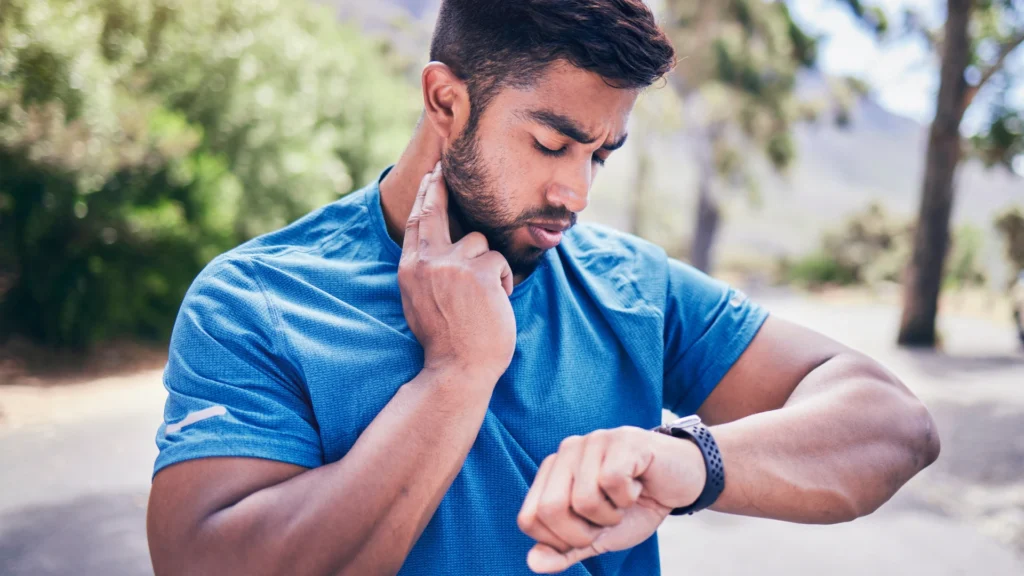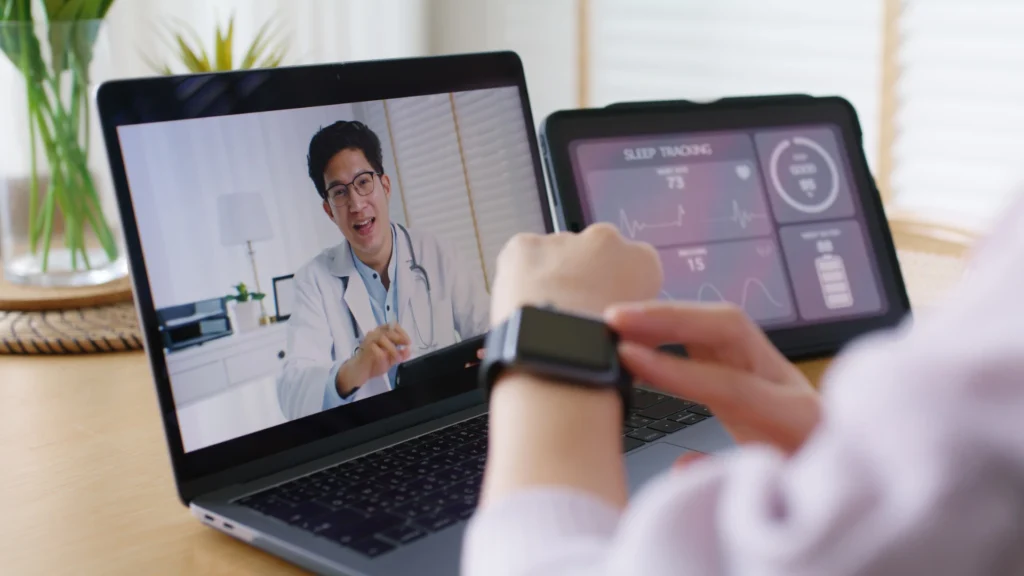
You check your smartwatch and notice your heart rate’s been higher than usual all week. You’re not sick, but something feels off. Instead of ignoring it—or wasting hours at a clinic—you hop on the FEV3R app, speak to a licensed doctor, and share your wearable’s data during the consultation.
This isn’t science fiction. It’s what smart health in Malaysia looks like today.
As Malaysians grow more health-conscious and digitally connected, a new synergy is emerging between wearable health devices in Malaysia and telemedicine platforms like FEV3R. These tools, once seen as standalone gadgets or lifestyle accessories, are now playing a bigger role in how doctors monitor, assess, and treat patients remotely.
Let’s explore how digital health monitoring powered by wearables is reshaping healthcare in Malaysia—and why you don’t need to be a tech expert to benefit from it.
What Are Wearable Health Devices?
Wearable health devices in Malaysia include fitness bands, smartwatches, and smart rings—tools that monitor various health metrics like heart rate, oxygen levels, steps, sleep, stress levels, and more. Brands like Apple, Samsung, Fitbit, Huawei, and Xiaomi are now commonly seen on Malaysian wrists.
While many people buy them to stay fit or track calories, the medical potential of these devices is quickly expanding. With Bluetooth syncing and app integration, this real-time health data can now inform your medical consultations—especially those done through telemedicine integration.
The Telemedicine Boom Meets Smart Wearables
Telemedicine is no longer a pandemic-era trend. It has become a practical, everyday solution for many Malaysians who want fast, affordable healthcare without clinic queues or travel. FEV3R, for example, lets users consult doctors on demand for just RM24 per session.
Now, imagine adding your heart rate data, sleep patterns, or blood oxygen readings from your smartwatch into that same digital consultation. Suddenly, your doctor doesn’t just hear how you’re feeling—they see it in real-time data.
This is the power of telemedicine integration with wearable health devices in Malaysia. It bridges the gap between subjective symptoms and objective data, helping doctors make more informed decisions.
Real-Life Scenarios Where Wearables Enhance Telemedicine
Not sure how all this fits into daily life? Here are some examples of how remote patient monitoring works hand-in-hand with platforms like FEV3R:
1. Detecting Early Warning Signs
Your smartwatch flags an irregular heart rate, but you feel fine. Instead of ignoring it, you consult a FEV3R doctor. The doctor reviews the data and guides you on whether to rest, monitor further, or go for a physical check-up.
2. Managing Chronic Conditions
For Malaysians with hypertension, diabetes, or heart conditions, digital health monitoring via wearables allows better control. You can regularly track key stats and review them with your FEV3R doctor without leaving home.
3. Post-COVID or Post-Illness Recovery
Many patients recovering from illness use wearables to monitor fatigue, oxygen levels, and sleep quality. Doctors on FEV3R can use this information to adjust recovery plans in real time.
4. Fitness & Mental Health Support
Sleep tracking, stress monitoring, and step counts can also support conversations around anxiety, burnout, or weight management—topics increasingly common in Malaysian health consultations today.

Why Malaysians Are Ready for This Shift
Malaysia has one of the highest smartphone penetration rates in Southeast Asia. Combine that with increasing awareness around lifestyle diseases, fitness, and convenience-driven living, and it’s easy to see why more people are investing in wearables and exploring smart health in Malaysia.
Add to that the cost and time savings of telehealth apps like FEV3R, and you get a perfect match: tech that works in the background, plus doctors who are ready to read your data and give advice accordingly.
It’s personal healthcare—but smarter and more immediate.
Where FEV3R Fits In: Smart Healthcare, Made Simple
FEV3R is a telemedicine integration platform that offers medical consultations anytime, anywhere. But what makes it different is how easy it is to combine with your digital lifestyle.
Using FEV3R alongside your wearable lets you track symptoms and patterns, then discuss them meaningfully with licensed doctors. This is especially helpful for those managing long-term health goals, or those who want early detection of potential issues.
Even without connecting your device directly, you can share screen captures of your wearable data during the consultation or summarise the stats for your doctor. The goal is to create better-informed, more productive health conversations.
In short, FEV3R turns your device into a 24/7 health ally—bringing digital health monitoring to life.
Benefits of Pairing Wearables with Telemedicine
Here’s a breakdown of why remote patient monitoring via wearables is worth considering:
- Continuous data = Better diagnosis
A one-time blood pressure reading is less helpful than a week-long record of daily patterns. - Reduced guesswork in virtual consultations
Doctors can pinpoint trends rather than rely solely on what patients describe. - Proactive care
Spot small changes before they become big problems—especially for high-risk individuals.
Empowered patients
You don’t need to wait until something is wrong to start paying attention to your health.
Challenges & Considerations
While the tech is promising, there are still a few things to consider:
- Not all devices are medically accurate. Fitness bands give useful trends, but they aren’t replacements for clinical devices. Always consult your doctor when unsure.
- Data privacy matters. Ensure your device and health apps follow proper security protocols.
- Integration isn’t always seamless. Right now, most telemedicine apps in Malaysia (including FEV3R) do not auto-sync with wearables. But manual sharing or screenshots still work.
- Digital divide. Some users, especially older Malaysians, may struggle with wearables or app usage. More education and support is needed.
Still, the benefits of smart health in Malaysia far outweigh the challenges—especially when it comes to reducing unnecessary clinic visits, promoting early detection, and helping people stay on top of their health goals.

The Future of Smart Healthcare in Malaysia
As wearable tech becomes more affordable and more Malaysians become comfortable with digital health, we’ll likely see stronger partnerships between device makers and telemedicine platforms.
Imagine a future where your smartwatch sends an automatic alert to your FEV3R doctor if it notices something unusual. Or where chronic disease patients get weekly reviews of their health data through AI-assisted teleconsults.
It’s not far off. And Malaysians—young, urban, and increasingly health-aware—are more than ready to embrace it.
Want Smarter Healthcare? Start With What’s Already on Your Wrist
You already check your heart rate, steps, and sleep. Now, take it a step further. Use that data to get real medical advice, not just fitness tips.
With FEV3R, you can talk to a doctor anytime and share your wearable insights for a clearer picture of your health. It’s affordable, fast, and made for modern Malaysian lifestyles.
So whether you’re a gym junkie, a busy parent, or just trying to stay ahead of health issues, combining your wearable health device in Malaysia with FEV3R is a simple way to unlock smarter care—without ever stepping into a clinic.
Contact Us






